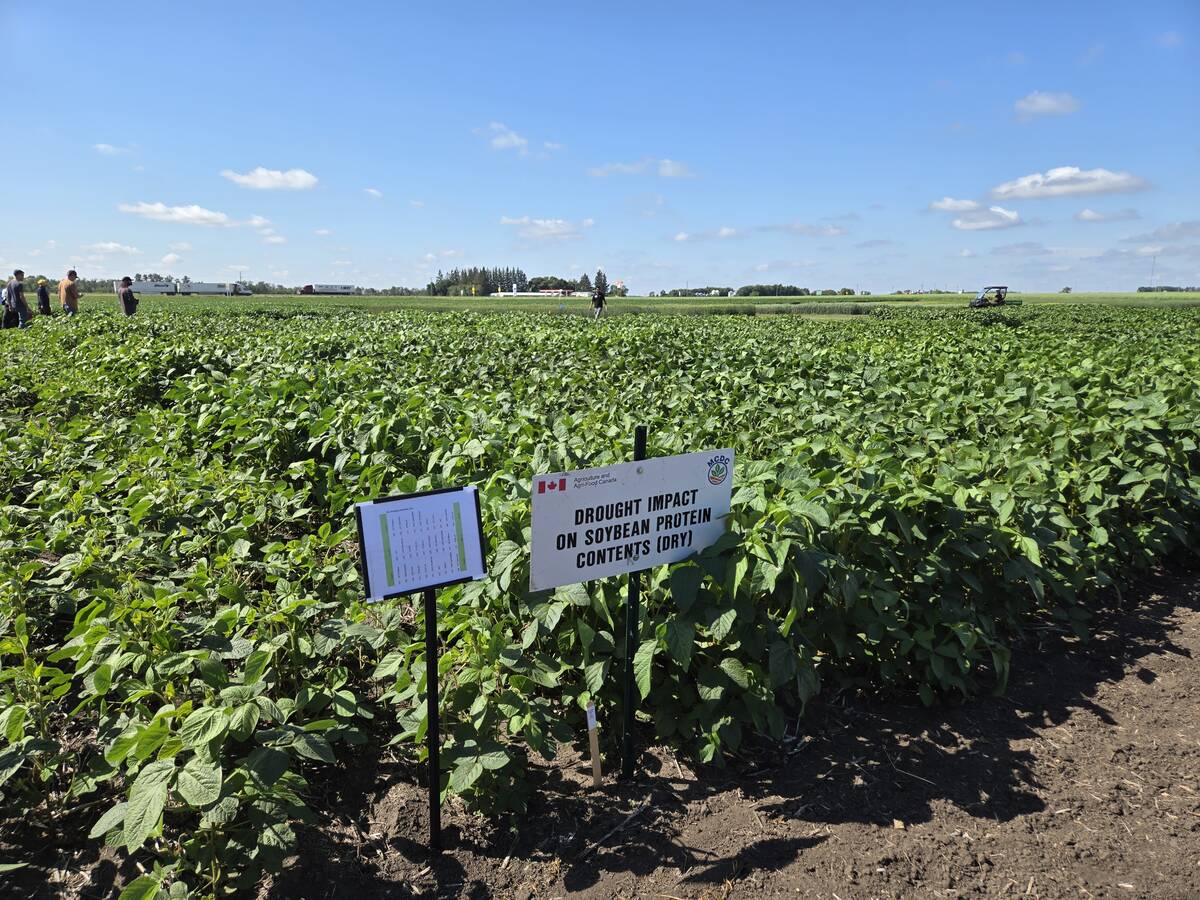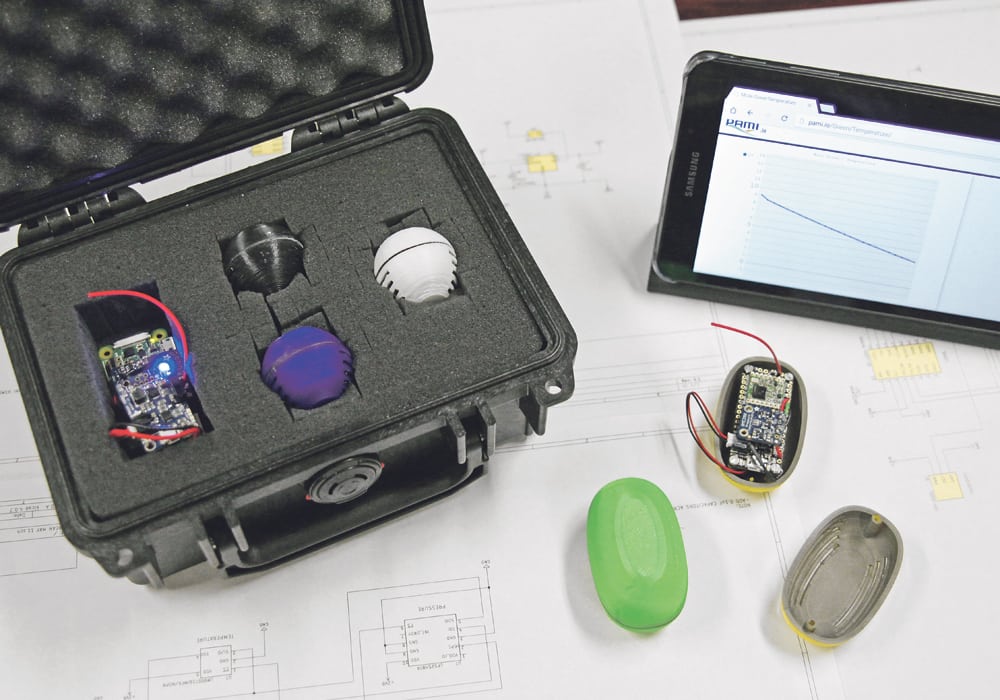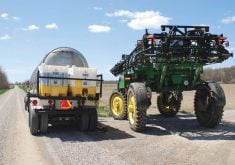Full-coverage bin sensors developed at the Prairie Agricultural Machinery Institute are based on electronic bin boluses
Grain storage sensors being developed at the Prairie Agricultural Machinery Institute use over-the-counter electrical components but offer coverage in large bins that is very difficult to achieve.
“The point of them is to try and get full coverage of moisture and temperature throughout a grain bin because we found that the options that are available now give limited coverage,” said Scott Seidle of PAMI.
The small battery-powered sensors are placed in capsules and added directly to the grain. They use low-frequency wireless technology to transmit readings to a base station.
Read Also

Carberry field day looks for agriculture solutions
Manitoba farmers explored research solutions for resilient crops, perpetual agronomic issues and new kinds of agricultural products at a field day at the Manitoba Crop Diversification Centre in Carberry on Aug. 6.
Multiple sensors will be used to ensure adequate coverage of stored grain.
Off-the-shelf Raspberry Pi and Arduino micro-computer processor-based components are used in the sensors, which communicate via long range, low power radio frequency chips (RF-LoRa).
“We’re using sensors that use RF-LoRa to transmit our signal to a base station, which is a Raspberry Pi,” Seidle said.
“RF-LoRa is a product that pretty much has their own protocol for sending and receiving data. It’s just a very user friendly and fairly easy route when transmitting data, yet it’s very effective.”
Seidle only recently joined PAMI, but he’s been busy helping to develop the micro electronic Mobile Sensor Mote (MSM) sensor.
He said transmitting sensor readings through the grain isn’t a problem; the biggest transmission issue is punching through the grain bin’s steel.
“But as you get lower in the frequency range you get more penetrating power,” Seidle said.
“The penetrating power that we have right now, we found in all the testing that we did we could go through the steel quite easily.”
The RF-LoRa devices are power-efficient enough to run for long periods sending and potentially receiving data inside a bin or elsewhere.
The concept for the sensors has them monitoring grain from harvest all the way through to the processors.
“(Growers could have) an attachment at the end of their auger that automatically feeds them into your grain,” Seidle said.
“Then you can have your sensors reading your temperature, humidity and hopefully your airflow eventually, too, throughout the span of the grain storage, so you would know at any point what is happening.”
The exact scope of the sensors’ design hasn’t been nailed down yet, but it’s possible that growers could pass over control of the sensors to grain purchasers.
“If someone sold this grain and they had these sensors in it, whoever they sold it to could also take advantage of these sensors,” he said.
“They wouldn’t even need to remove them.”
The sensors will be removed and possibly reused once they reach the end user with the grain.
The first model of the sensors is only capable of sending transmissions of the sensor readings.
Seidle said PAMI plans to develop sensors capable of two-way communication, in which information will be sent back and forth between the sensors and the base stations.
It’s still early in the sensors’ development, but he said security will be an important aspect of the product to prevent data from being maliciously intercepted or manipulated.
“Security is always a really big issue that needs to be addressed,” he said.
“Whether block chain is used is up in the air right now, but some sort of encryption is definitely foreseeable.”
The base station was built with $90 worth of parts, and it costs around $80 to build a sensor.
However, they will be cheaper to construct with bulk purchases of the components.
















